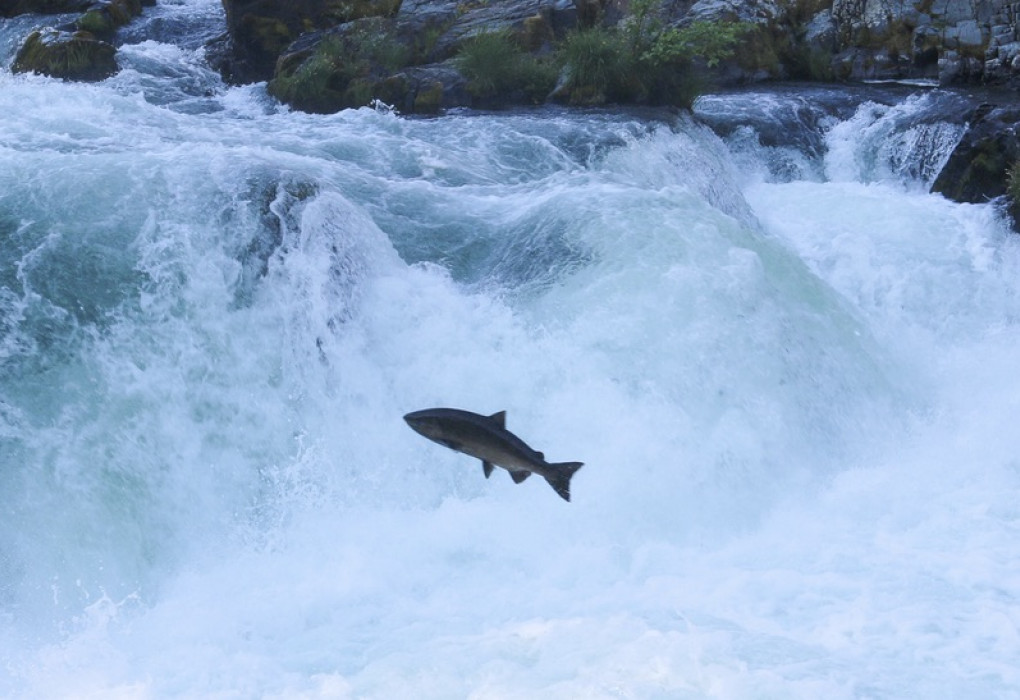Chinook runs continue to decline in the Pacific Northwest
Spring is in the air, and our famous spring run Chinook salmon have started their long, grueling journey back to their homewaters. Referred to as King Salmon, these fish are the largest of the salmonid species and historically grew in excess of 40lbs in many places. For years Chinook salmon, both spring and fall, have gone through significant declines.
In 2014, Oregon Department of Fish and Wildlife worked with stakeholders to craft a conservation management plan called the Coastal Multispecies Conservation Management Plan that focused on multiple species, including spring Chinook. ODFW released an initial five year report in 2020 and now releases yearly updates on Oregon Coast Chinook, providing population estimates. This report highlights the critical abundance threshold and desired abundance threshold for fisheries managers in individual populations.
Unfortunately, when looking at these populations, things look bad. Eight of fourteen populations of fall Chinook reached critical abundance in the past eight years, and four of those hit critical abundance multiple times. As for spring Chinook, the South Umpqua hit a record low of 28 wild fish in 2018. When inquiring about spring Chinook in the Coquille basin at a public meeting, ODFW announced they were quite possibly gone. A viability analysis indicated that Elk River fall Chinook are non-viable.
This isn’t an isolated situation. Washington state’s populations are in dire straits, the Columbia River stocks have been listed for years, and the Southern Oregon and Northern California Coast Chinook have experienced massive declines in both fall and spring fish. The Klamath River Chinook are crumbling - spring Chinook are almost extinct and fall run are seeing critically low numbers. The Pacific States Marine Fisheries Commission has asked for a closure to offshore fishing, which CDFW and ODFW ultimately granted in a joint decision.
A recent paper authored by Atlas et al. shows that most Chinook populations are declining, with negative trends in escapement and run size. The populations struggling the most were interior spring Chinook in the Fraser, Columbia, and Snake Rivers and most populations in California. This is yet another study confirming the nightmare of decline of our beloved Chinook Salmon.
Living in the Umpqua Basin, the return of spring Chinook is a highlight to many angler’s season. The tastiest salmon of all return over 170 miles upstream to the upper North Umpqua river where they spawn and rear to create the next generation of fish. Similarly, the few fish left in the South Umpqua are currently in the middle of their migration to the large pools high in the watershed where they will over summer. This year, ODFW estimates around 2,400 wild spring Chinook in the North Umpqua and only 161 wild fish in the South Umpqua (critical abundance for South Umpqua is 150 wild spring Chinook), meaning both populations are flirting with critical abundance.
Our friends to the North, Wild Fish Conservancy, won a monumental court case holding parties liable for overharvest of Chinook Salmon offshore of Alaska and British Columbia. This is a major victory for Chinook in general and the wild fish of the Oregon Coast. We hope these efforts will help with a monumental shift in resorting abundance in Oregon.
The decline of Chinook also highlights the importance of habitat restoration and protection in all watersheds. We must invest in projects that will protect our cold water in the face of climate change. Identifying and protecting key cold water refugia that will continue to keep many watersheds cold and clean during the massive shift our world is experiencing will be critical to the ongoing existence of Chinook.
Native Fish Society is committed to working with agencies, partners, and anglers to do everything necessary to help restore these populations. In the fall of 2022, Native Fish Society, Center for Biological Diversity and Umpqua Watersheds submitted an ESA petition to list Oregon Coast Chinook Salmon and Southern Oregon Northern California Coastal Chinook. Listing these fish will bring the necessary resources forward to help with key limiting factors affecting population health. We will push for habitat restoration in multiple watersheds throughout the Pacific Northwest. We will advocate for restraint in commercial fishing; decreasing offshore harvest and increasing spawner escapement. We are committed to reopening habitat through dam and barrier removal. This includes the famous Winchester Dam on the North Umpqua River. We firmly believe there is hope for restoring Chinook Salmon to abundance through the dedication and commitment to the protection of our homewaters.
If you want to learn more or get involved, contact one of our regional coordinators today!
